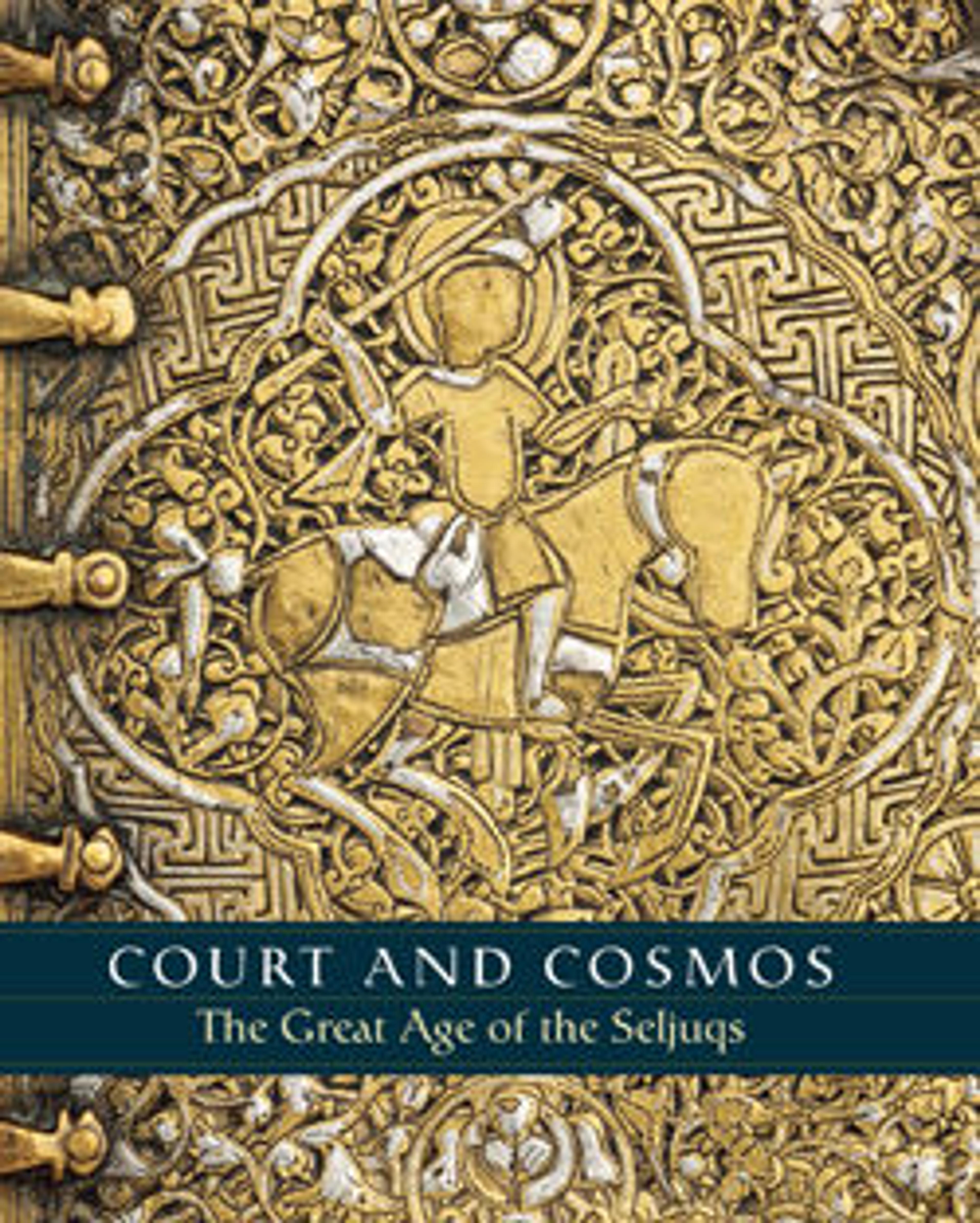Standing Figure with Feathered Headdress
Artwork Details
- Title:Standing Figure with Feathered Headdress
- Date:12th–early 13th century
- Geography:Attributed to Iran
- Medium:Gypsum plaster; modeled, carved, polychrome-painted, gilded
- Dimensions:H. 47 in. (119.4 cm)
W. 20 1/2 in. (52.1 cm)
D. 8 3/4 in. (22.2 cm) (including wall mount)
Wt. 170 lbs. (77.1 kg)
from the bottom of the coat to the top of the crown: 46 in. (116.8 cm) - Classification:Sculpture
- Credit Line:Cora Timken Burnett Collection of Persian Miniatures and Other Persian Art Objects, Bequest of Cora Timken Burnett, 1956
- Object Number:57.51.18
- Curatorial Department: Islamic Art
Audio
6691. Two Royal Figures, Part 1
SHEILA CANBY: I’m Sheila Canby, I’m Head of the Islamic Art Dept, and I’m lucky to be here today speaking to Stefan Heidemann, about two of our most interesting pieces. Two stucco figures that defy the belief that there is no sculpture in Islamic art – because that’s what they are!
STEFAN HEIDEMANN: I'm fascinated by those two figures. They are almost life size and they are moonlike faces, which are associated in the Middle Ages with Central Asian, Turkish people…. We find crowns on them. One is a jeweled crown, and the other one has two little wings. And this always goes back to the ancient Iranian Sassanian period. And this revival of Sassanian forms has something to do with the glory of the ancient Persian empires, which the rulers in Iran and Central Asia tried to revive. Both figures seem to be royal figures. but they were part of a larger stucco decoration a revetment or a panel… within a large audience hall. And if we look at the close parallels which are not in stucco, but are in fresco… then we have the palaces in Samarkand of the 10th and 11th century which show similar life-size figures with similar garments and the frescoes… as they are all three-quarter figures directed to a center…or to a central figure. So we have to imagine a room with these figures in the center of a decoration. and then this room was used, of course, for audiences. So the audience at the wall increased the audience within the room.
SHEILA CANBY: Very clever of them.
NARRATOR: While there is a tendency to avoid figural images in Islamic Art, such imagery did play an important role. For our visitors if you want to hear about this, press PLAY.
Listen to more about this artwork
More Artwork
Research Resources
The Met provides unparalleled resources for research and welcomes an international community of students and scholars. The Met's Open Access API is where creators and researchers can connect to the The Met collection. Open Access data and public domain images are available for unrestricted commercial and noncommercial use without permission or fee.
To request images under copyright and other restrictions, please use this Image Request form.
Feedback
We continue to research and examine historical and cultural context for objects in The Met collection. If you have comments or questions about this object record, please contact us using the form below. The Museum looks forward to receiving your comments.
